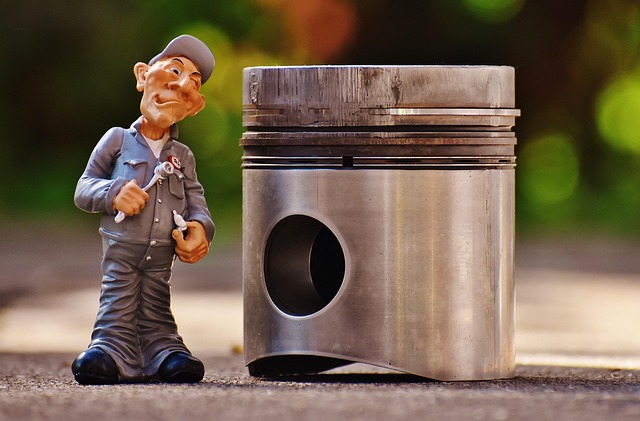Looking to register your car in California? This comprehensive guide walks you through every step, from understanding key requirements to crucial VIN verification. Gather essential documents, perform a VIN check, and apply either in-person at the DMV or online conveniently. Post-registration, learn how to complete necessary tasks and secure your custom license plates. Streamline the process with our clear instructions and ensure compliance with California’s stringent regulations for peace of mind on the road.
- Understand California Car Registration Requirements
- Gather Necessary Documents for VIN Verification
- Perform Vehicle Identification Number (VIN) Check
- Apply for Registration at a DMV Office or Online
- Complete Post-Registration Steps and Plate Assignment
Understand California Car Registration Requirements

Before registering your car in California, it’s essential to understand the state’s specific requirements. One critical step is ensuring accurate and up-to-date vehicle identification number (VIN) verification. This involves confirming the VIN on the vehicle matches the one reported on official documentation, like the title or bill of sale. California requires this process to prevent fraud and ensure that registered vehicles match the actual cars in circulation.
Additionally, you’ll need to meet other criteria such as passing an emissions test (in certain areas) and ensuring your car has all necessary safety features. Utilization of a mobile vin inspection or mobile vin verifier can simplify this process by providing on-site VIN verification services, making it easier to register your vehicle quickly and efficiently in California.
Gather Necessary Documents for VIN Verification

Before you begin the registration process, ensure you have all the required documents for a successful VIN (Vehicle Identification Number) verification. This step is crucial as it ensures your car’s history and authenticity are accurately assessed. Gather essential paperwork such as the title or registration certificate from the previous owner, proof of insurance, and a valid driver’s license or state-issued ID. Additionally, you’ll need to provide a completed California Vehicle Code form, which can be obtained online or at local DMV offices.
For a seamless experience, consider using a mobile vin verifier or scheduling a mobile vin inspection. These services offer convenient alternatives, allowing you to complete the verification process without visiting a DMV office. With just a few details and a quick check, these mobile options ensure you have all the necessary information for a smooth car registration in California.
Perform Vehicle Identification Number (VIN) Check

Before registering your car in California, it’s crucial to perform a Vehicle Identification Number (VIN) check. This process involves verifying the vehicle’s history and ensuring it meets all necessary safety standards. A VIN inspection is essential as it helps identify any outstanding issues or previous damage that could impact the registration process.
In California, you can easily conduct this check using a mobile vin verifier or through an online service. The mobile vin verification process is straightforward; simply enter your VIN into a dedicated app or website, and it will retrieve detailed information about the vehicle’s past, including ownership history, accident records, and maintenance logs. This data will help determine if the car is safe to register and ensure you avoid any potential pitfalls during the registration procedure.
Apply for Registration at a DMV Office or Online

You have a few options when it comes to registering your car in California. One convenient method is to apply for registration at a DMV office. Simply bring your completed application, along with all necessary documents and fees, to your nearest California Department of Motor Vehicles (DMV) location. A staff member will guide you through the process and conduct a Vehicle Identification Number (VIN) verification to ensure the vehicle’s authenticity.
Alternatively, you can register online, which is often faster and more efficient. The DMV provides an accessible platform for submitting applications and uploading required documents, including proof of ownership, insurance, and identification. Online registration allows for a digital VIN inspection, where you’ll enter your vehicle’s unique VIN to verify its information. This method streamlines the process, saving you time and effort, especially if you prefer the convenience of completing tasks from home.
Complete Post-Registration Steps and Plate Assignment

After successfully registering your vehicle with the California Department of Motor Vehicles (DMV), there are a few crucial post-registration steps to complete. One of the most important is vin verification, which ensures the accuracy of your vehicle’s identification number (VIN). You can opt for a convenient mobile vin inspection or visit an authorized location for this critical process. Accurate VIN documentation is essential, as it not only verifies ownership but also plays a vital role in ensuring safety and security features are properly registered.
Once your car passes the vin verification process, you’ll receive official vehicle plates. These plates should be clearly displayed on your vehicle at all times. The DMV will guide you through the plate assignment process, which involves choosing the appropriate type of plates based on your vehicle’s classification and use. This step completes the registration process, making your car legal to drive on California roads.
Registering a car in California involves understanding specific requirements, gathering essential documents, and completing crucial steps like VIN verification. By following these outlined procedures—including visiting a DMV office or applying online—you’ll ensure your vehicle’s legal status. Remember to complete post-registration tasks for a seamless ownership experience, and always keep your registration up to date through periodic renewals. This process is designed to maintain order and safety on California’s roads, ensuring every vehicle meets necessary standards.
